Tissue resilience in health and disease
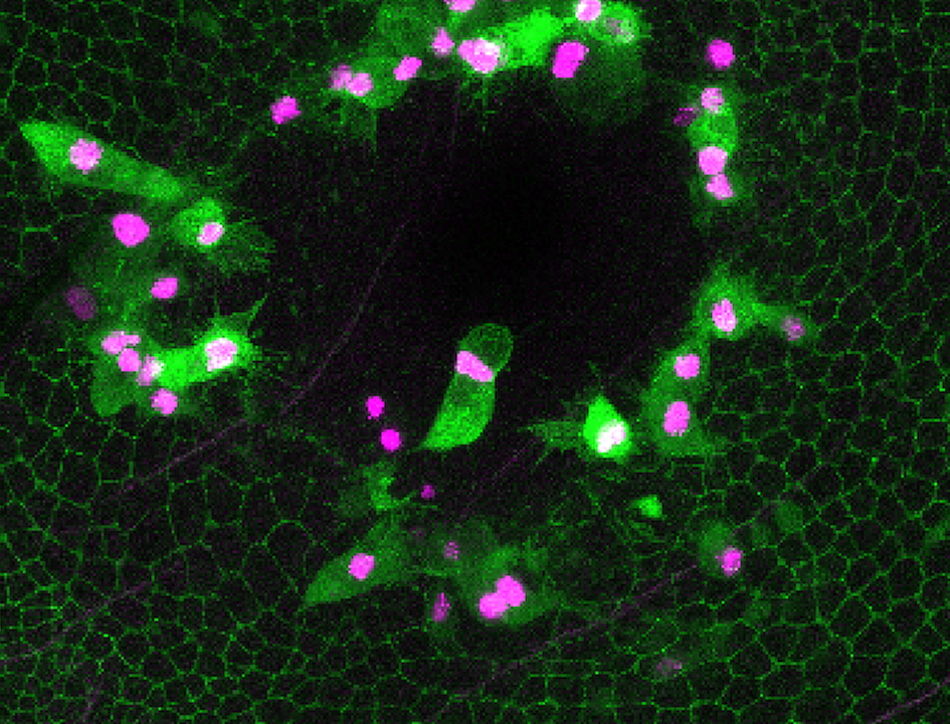
Theo Murphy international scientific meeting organised by Dr Helen Weavers and Professor Anna Jazwinska.
Most animal and plant tissues have an intrinsic ability to withstand day-to-day stress, but many also exhibit extraordinary adaptive responses to stress that drive increased ‘resilience’ against further insult. This inter-disciplinary meeting showcased cutting-edge research from basic scientists and clinicians exploring the mechanistic basis and translational potential of these remarkable phenomena, including the role of diet, ageing and biomechanics.
Meeting papers will be available in a future issue of Philosophical Transactions of the Royal Society B.
Attending this event
This meeting has taken place.
Enquiries: contact the Scientific Programmes team.
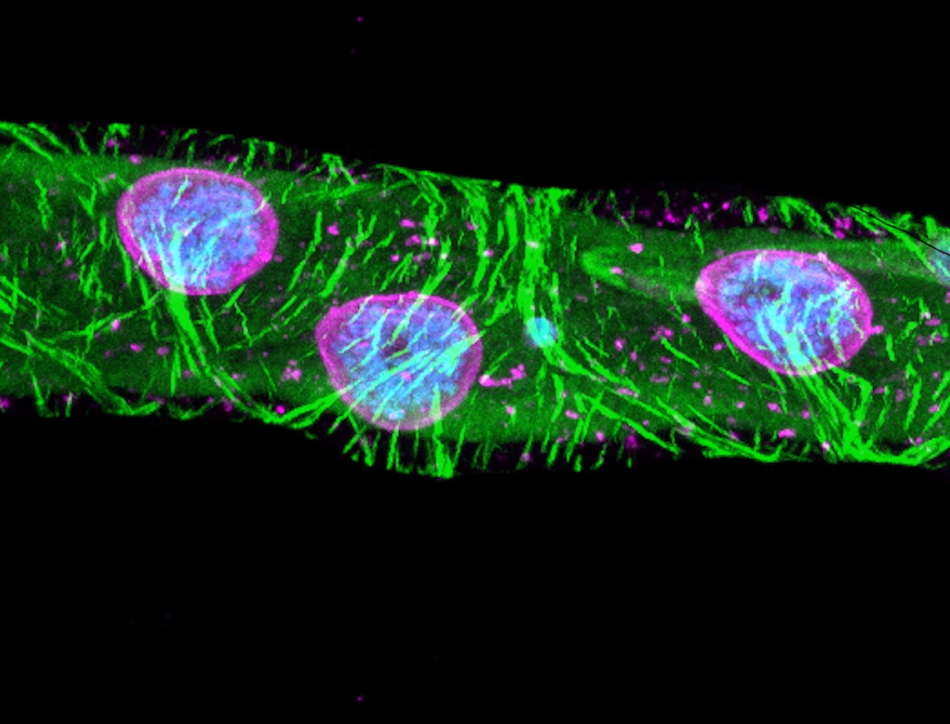
Image: Jack Holcombe (Kidney tubule)
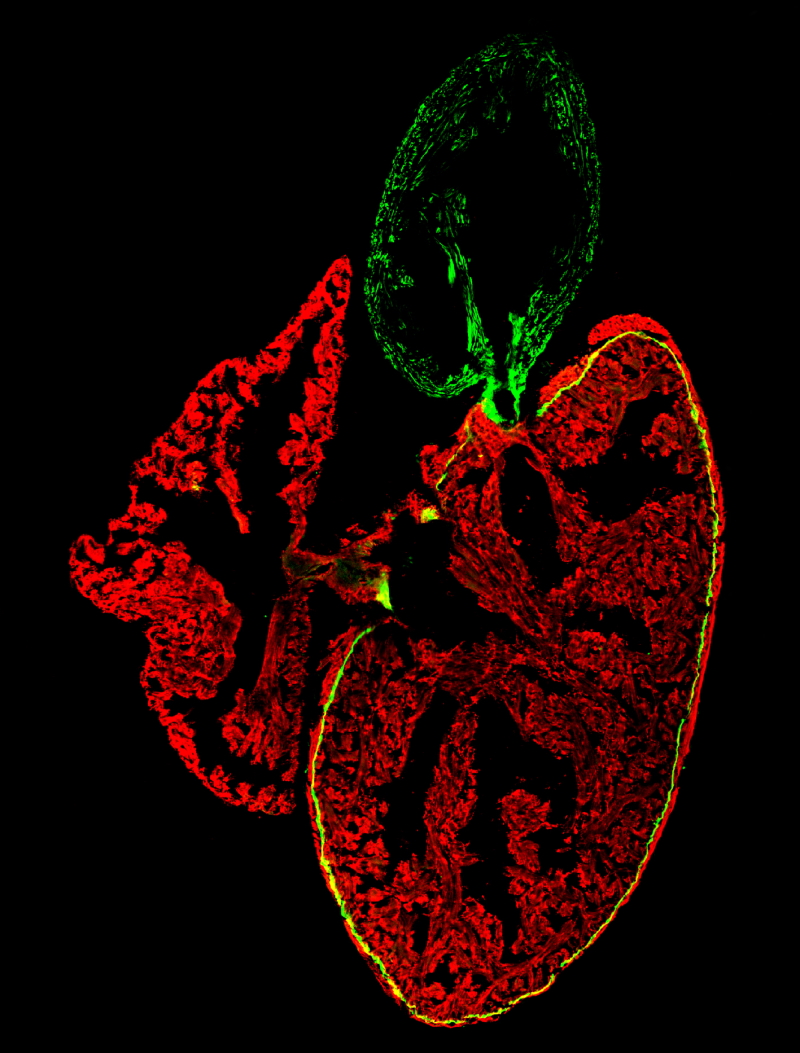
Image: Zebrafish heart (Anna Jazwinska Lab)
Organisers
Schedule
Chair
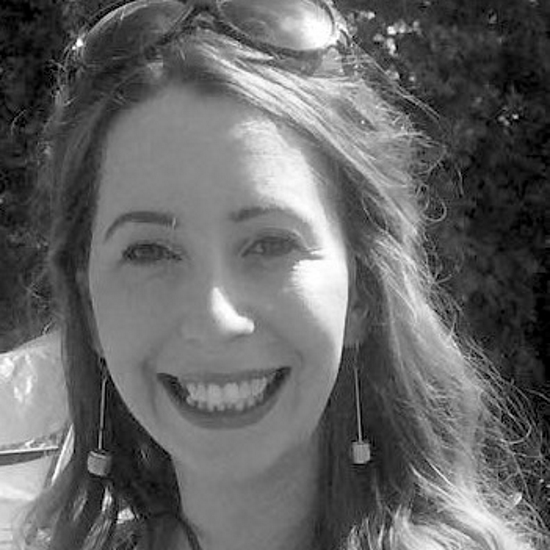
Dr Helen Weavers, Biomedical Sciences, Bristol, UK

Dr Helen Weavers, Biomedical Sciences, Bristol, UK
Helen Weavers is a Wellcome Trust and Royal Society Sir Henry Dale Fellow at the University of Bristol. She obtained her PhD from the University of Cambridge in 2012 and held a short post-doctoral position at the University of Bristol (2013-2017) before starting her own lab in 2018. Much of Helen’s research is driven by understanding how body tissues (such as the skin or renal system) resist and recover from insult. In particular, she studies the molecular and cellular mechanisms that make tissues resilient to damage caused by toxic molecules or physical injury.
| 09:00-09:05 |
Welcome by the lead organiser
|
|---|---|
| 09:05-09:30 |
Synaptic and metabolic targets for ischemic neuroprotection by preconditioning paradigms
Synaptic dysfunction has been linked to cognitive impairments after cerebral ischemia. The mechanisms underlying ischemia-induced synaptic dysfunction and cognitive impairments have not been fully elucidated. Although many mechanisms have been postulated, metabolic derangements have also been implicated since vascular and mitochondrial dysfunction also developed following cerebral ischemia. Professor Perez-Pinzon's laboratory focuses on investigating the phenomenon of ischemic preconditioning, which involves exposing the brain to a sub-lethal ischemic insult prior to a lethal one, resulting in increased tissue resilience. The author of the talk with a group of researchers have identified key mimetic molecules that mimic the synaptic and metabolic resilience observed following ischemic preconditioning. This presentation highlights the research group's findings on the signalling pathways that promote metabolic, synaptic, and cognitive improvements following cerebral ischemia. The results have important implications for the development of novel therapeutic strategies for ischemic brain injury. 
Professor Miguel Perez-Pinzon, University of Miami, USA

Professor Miguel Perez-Pinzon, University of Miami, USADr Perez-Pinzon’s research group at the University of Miami was established in 1995 and over the last two decades has been studying the pathophysiology of cerebral ischemia. He directs the Peritz Scheinberg’s Cerebral Vascular Disease Research Laboratories at the University of Miami since 2005. He is the Peritz Scheinberg Endowed Professor in Neurology and Vice-Chairman of Basic Sciences in the Department of Neurology. His main research expertise is in the area of cerebral ischemia, which results from cardiac arrest or stroke. His research focuses on the areas of synaptic, cognitive, vascular and mitochondrial dysfunction that ensue following cerebral ischemia. Over the last 25 years, his laboratory has investigated the signalling pathways that lead to neuroprotection against ischemia following ischemic preconditioning (IPC) and over the last 10 years, his group has been investigating the role of physical exercise in improving cognitive function following cerebral ischemia. Their goal is to develop new therapies for pre- and post-treatment in stroke and cardiac arrest patients. Dr Perez-Pinzon has also been recognized as a leader in the field of stroke, since he was the Chair of the program committee for the International Stroke Conference from 2018-20, the largest stroke conference in the world. Dr Perez-Pinzon has also been a leader in the field of Ischemic Conditioning. He organized the 2nd Conditioning conference in 2011 in Miami, Florida. He subsequently participated in the conditioning conferences that took place in Suzhou, China in 2016 and in Beijing, China in 2018. Finally, he helped launch and was the first Editor in Chief for the journal Conditioning Medicine, specialized in the topic of this grant application. He was also co-editor of the book Innate Tolerance in the CNS: Translational Neuroprotection by Pre- and Post-Conditioning, a Springer Series in Translational Stroke Research (Gidday, Jeffrey M; Perez-Pinzon, Miguel A; Zhang, John H (Eds)). |
| 09:30-09:40 |
Discussion
|
| 09:40-10:10 |
Macrophage control of tissue homeostasis
Tissue homeostasis relies on a network of cell intrinsic and extrinsic mechanisms that maintain vital variables within a dynamic range compatible with maintenance of organismal fitness and survival. These homeostatic processes involve an active interplay between cell proliferation, differentiation, and death. Macrophages are tissue-resident innate immune cells that act, beyond microbial sensing and clearance, to support tissue homeostasis. Here the scientists adapted a stable two-cell system in vitro1, based on the interplay between macrophages and fibroblasts, which recapitulates tissue homeostasis in vivo. They found that disruption of iron metabolism, imposed by the deletion of the heavy chain of ferritin (FTH), compromised regulation of homeostasis in the two-cell system in vitro as well as in mice. FTH-expressing macrophages re-established homeostatic control in the stable two-cell system in vitro as well as in vivo, restoring organismal energy metabolism and survival of Fth-deleted mice. RNAseq analysis of rescuing macrophages revealed the induction of an array of mitochondrial genes, not expressed in Fth-deficient macrophages, suggesting that macrophages restore homeostasis in Fth-deleted mice via a mechanism associated with mitochondrial biogenesis and arguably mediated via mitochondria transfer to stressed tissues. Their findings effectively validate the stable two-cell system as an in vitro model system to study regulation of tissue homeostasis by macrophages in vivo. 1. Zhou, X. et al. Circuit Design Features of a Stable Two-Cell System. Cell 172, 744-757 e717 (2018). 
Dr Rui Martins, Instituto Gulbenkian de Ciência, Portugal

Dr Rui Martins, Instituto Gulbenkian de Ciência, PortugalRui Martins is a senior post-doc at the Inflammation laboratory headed by Dr Miguel Soares at the Instituto Gulbenkian de Ciência (IGC). He obtained his PhD from the Medical University of Vienna in 2017, followed by a move to the IGC in Lisbon for his current post-doctoral position. His scientific interest spans between the role of macrophages in the maintenance of tissue and organismal homeostasis, and how specific heme-degradation metabolites drive mechanisms of resistance against malaria. |
| 10:10-10:20 |
Discussion
|
| 10:20-10:50 |
Break
|
| 10:50-11:20 |
Hormesis and the limits of biological plasticity: biological and clinical implications
Phenotypic plasticity represents an environmentally-based change in an organism’s observable properties. It has been evaluated for its quantitative features and genetic basis, especially within an ecological-evolutionary framework. Toxicological experiments on the dose-response continuum over a wide dose range provide evidence that the hormetic dose response zone offers a quantitative estimate of phenotypic plasticity. The low dose hormetic stimulation is an adaptive response that is an environmental-induced altered phenotype and provides a quantitative estimate of biological plasticity. The magnitude of phenotype changes indicative of plasticity is modest with maximum responses about 30-60% greater than control values. These findings represent the first quantitative estimates of biological plasticity along with broad generalization from bacteria to humans. According to the hormesis-plasticity perspective such increases are bounded by the limits of biological plasticity which are defined by the quantitative features of the hormetic dose response. This analysis establishes the upper limits of chemical and pharmacological agents to upregulate biological performance (e.g., cognitive enhancement, hair growth, disease resistance) and should drive the design of experimental and clinical investigations, with respect to the number of doses, and dose spacing, and guide their capacity to detect significant treatment effects in epidemiological studies, including the randomized clinical trial (RCT). 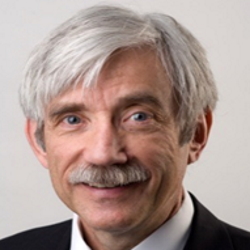
Professor Edward J. Calabrese, University of Massachusetts, School of Public Health and Health Sciences, Amherst, USA

Professor Edward J. Calabrese, University of Massachusetts, School of Public Health and Health Sciences, Amherst, USAEdward J. Calabrese is a Professor of Toxicology at the University of Massachusetts, School of Public Health and Health Sciences, Amherst. Dr Calabrese has researched extensively in the area of host factors affecting susceptibility to pollutants, and is the author of over 1,000 papers in scholarly journals, as well as more than 10 books. Dr Calabrese was awarded the 2009 Marie Curie Prize for his body of work on hormesis. He was the recipient of the International Society for Cell Communication and Signaling-Springer award for 2010. He was awarded an Honorary Doctor of Science Degree from McMaster University in 2013. In 2014 he was awarded the Petr Beckmann Award from Doctors for Disaster Preparedness. Dr Calabrese was awarded the G. William Morgan Lectureship Award and the Roberts S. Landauer, Sr., Lectureship Award in 2022 from the Health Physics Society. |
| 11:20-11:30 |
Discussion
|
| 11:30-12:00 |
NRF2/ARE signalling in tissue homeostasis and stress resistance: from circadian regulation to extracellular matrix organisation
Abstract of the talk will be available soon. 
Dr Vanja Pekovic-Vaughan, University of Liverpool, UK

Dr Vanja Pekovic-Vaughan, University of Liverpool, UKDr Vanja Pekovic-Vaughan is a Senior Lecturer in Circadian Physiology in the Institute of Lifecourse and Medical Sciences at the University of Liverpool (UoL), where she was awarded a prestigious Welcome Trust Tenure-Track Fellowship. She gained a BSc in Human Genetics (Leeds University, UK) and a PhD in Molecular & Cellular Biology of Ageing (Durham University, UK). She undertook postdoctoral training in several of the UK’s leading laboratories (Uo Newcastle, Durham, Manchester, KCL) investigating the role of redox signalling in cellular ageing and inherited human diseases and their temporal regulation by the cellular time-keeping mechanism, the circadian clock. Her laboratory is pursuing an interdisciplinary research spanning molecular biology, in vivo physiology, pharmacology and mathematical modelling to investigate the role of redox signalling and circadian rhythms in normal physiological processes as well as chronic age-related conditions and the potential of utilizing chronotherapy in smarter drug repurposing. Her group’s research is funded through UKRI (MRC, BBSRC, EPSRC), Welcome Trust, RoseTreest Trust, MD UK and The Royal Society. Dr Pekovic-Vaughan serves as a network coordinator on an ECMage Operational Group, a BBSRC/MRC interdisciplinary UK Ageing national network (UKAnet) for Ageing across LifeCourse (https://www.ukanet.org.uk/ec-mage/). Currently, she serves on the Biochemical Society Committee Research Area VI – Biological Systems, as a Managing Scientific Editor for Redox Biology and a Review Editor for BioFactors. |
| 12:00-12:10 |
Discussion
|
| 12:10-12:30 |
Plants take their time in fluctuating environments
Dr Dora Cano-Ramirez's research focuses on understanding how plants respond and adapt to fluctuating environments. Recently Dr Cano-Ramirez together with a group of researchers identified a mechanism that plants use to cope with cold bright mornings when their photosynthetic machinery is at its most vulnerable. Plants need to be able to discern when to take low temperature seriously. During winter and spring, the coldest time of day is usually just before dawn, when the earth has lost the maximum amount of heat energy from the previous short day’s sun. This will trigger cold acclimation mechanisms that gradually adapt plants to freezing temperatures. Light combined with low temperatures can be very dangerous to a plant and the researchers found that plants have employed an evolutionarily-ancient mechanism in the chloroplasts to help them tolerate the cold. Low temperatures and circadian signals are integrated by a sigma factor, which contributes to protection of photosynthesis before and during freezing. The scientists found that the plant’s circadian clock helps them make the decision to respond, based on the time of day the cold snap happens. This suggests the pathway is of considerable biological importance in plants and could be targeted to improve crop yields under uncertain climate conditions. Currently Dr Cano-Ramirez is looking at the stochastic nature, or randomness, of transcription factors and gene expression in plants growing under variable environmental stresses. 
Dr Dora Cano-Ramirez, Sainsbury Laboratory, University of Cambridge, UK

Dr Dora Cano-Ramirez, Sainsbury Laboratory, University of Cambridge, UKDora Cano-Ramirez is from Mexico City, and she did her undergraduate degree at the National Autonomous University of Mexico (UNAM) in Pharmacobiological Chemistry followed up by a Master degree in Biochemistry studying plant lipids biophysics in the context of temperature variation. Dora came to the UK to study for PhD at the University of Bristol under the supervision of Professor Antony Dodd (now at John Innes Centre) in signalling pathways and circadian rhythms in plants. After her PhD Dora joined Professor Alex Webb’s lab in the Department of Plant Sciences at the University of Cambridge studying the role of BIG as a regulator of the circadian clock and polar auxin transport. Her current role as a Research Associate in the Locke Group at Sainsbury Laboratory, University of Cambridge, is studying how random gene expression in plants affects their survival under fluctuating environments. |
| 12:30-11:40 |
Discussion
|
| 12:40-13:50 |
Lunch
|
Chair
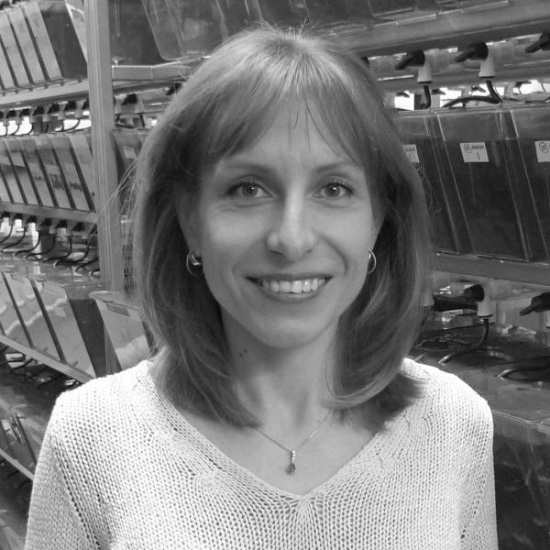
Professor Anna Jazwinska, the University of Fribourg, Switzerland

Professor Anna Jazwinska, the University of Fribourg, Switzerland
Anna Jazwinska is full professor at the University of Fribourg in Switzerland. She obtained her PhD from the University of Cologne in Germany in 2000. She held a post-doctoral position at the Biozentrum in Basel in Switzerland (2000-2004). Then, she was an instructor and associate researcher at the Harvard Medical School and Children’s Hospital Boston, USA. She started her own lab at the University of Fribourg in 2007. Her current research focuses on organ regeneration and cardiac preconditioning in zebrafish.
| 13:50-14:20 |
Injury and repair in kidney transplantation
Kidney transplantation is a the best treatment of end stage kidney disease. However shortage of donor organs necessitates the utilisation of kidneys from higher risk donors, older with additional morbidities. Deceased kidney donation is the main source of transplants, yet these grafts yield inferior short and long- term transplant outcomes when compared to living donation. Dr Maria Kaisar's work focuses in identifying molecular signatures of subclinical kidney injury and tissue resilience. Analysis of clinical samples obtained from the Quality in Organ Donation (QUOD) Biobank by high end mass spectrometry technologies shown the impact of cytoskeletal protein degradation in dysregulating the kidney cytoskeleton in donor kidneys with suboptimal transplant function. Dr Kaisar's lab has described the role of interaction of TGFβ and Calpain-1 axis in proteolytic processing of Talin-1 and Actinin-4 in kidney cytoskeleton (Vaughan et al., AJT 2019). Dr Kaisar's current studies focus on the impact of donor age and circulatory inflammation in the progression of proteolytic activation and kidney injury. Mass spectrometry analysis of kidney biopsies and integration of molecular signatures with clinical data using machine learning has revealed that we can achieve granularity in donor kidney assessment stratification and better understanding of the biological alterations that lead to kidney injury progression. Dr Maria Kaisar's lab has identified age-modulated immuno-metabolic proteome profiles of deceased donor kidneys predict 12-month posttransplant outcome (Charles P et al., https://www.medrxiv.org/content/10.1101/2023.03.31.23288011v1) .jpg)
Dr Maria Kaisar, University of Oxford
.jpg)
Dr Maria Kaisar, University of OxfordDr Maria Kaisar obtained her DPhil in Transplantation Science from the Nuffield Department of Surgical Sciences, University of Oxford, under the supervision of Professor Benedikt Kessler and Professor Rutger Ploeg. Her interests lie in basic and translational research to better understand the biological mechanisms that lead to donor organ injury or repair. Her collaborative work, within NHS Blood and Transplant and the University of Oxford, focuses on the development of novel diagnostics of donor organ quality to better assess deceased donors and donor organs prior to transplantation. Maria holds the role of the Translational Research Coordinator and is a member of the National Management Team and the Steering Committee of the Consortium of Quality in Organ Donation (QUOD). She is a Board Member of the Basic Science Committee of the European Society of Organ Transplantation (ESOT) and a member of The Transplantation Society (TTS) Educational Committee. |
|---|---|
| 14:20-14:30 |
Discussion
|
| 14:30-15:00 |
Mechanisms of longevity: lessons from the naked mole rat
Professor Gorbunova's talk will form on the mechanisms of longevity in the naked mole rat and on strategies of translating it to other species including humans. 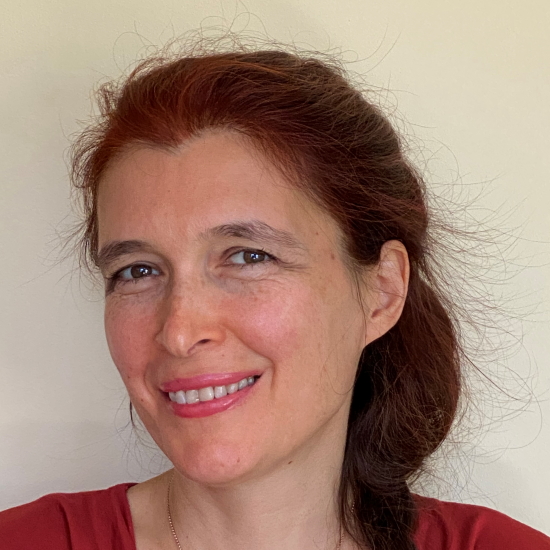
Professor Vera Gorbunova, University of Rochester, USA

Professor Vera Gorbunova, University of Rochester, USAVera Gorbunova is an endowed Professor of Biology at the University of Rochester and a co-director of the Rochester Aging Research Centre. Her research is focused on understanding the mechanisms of longevity and genome stability and on the studies of exceptionally long-lived mammals. Dr Gorbunova earned her BSc degree at Saint Petersburg State University, Russia, and her PhD at the Weizmann Institute of Science, Israel. Dr Gorbunova pioneered comparative biology approach to study ageing and identified rules that control evolution of tumour suppressor mechanisms depending on the species lifespan and body mass. Dr Gorbunova investigates the role of Sirtuin proteins in maintaining genome and epigenome stability. She also investigates the role of genomic instability and transposable elements in ageing and disease. She demonstrated that LINE1 elements trigger innate immune response that drives age-related sterile inflammation. She has more than 100 publications including publications in high profile journals such as Nature, Science and Cell. Her work received awards of from the Ellison Medical Foundation, the Glenn Foundation, American Federation for Aging Research, and from the National Institutes of Health. Her work was awarded the Cozzarelli Prize from PNAS, prize for research on ageing from ADPS/Alianz, France, Prince Hitachi Prize in Comparative Oncology, Japan, and Davey prize from Wilmot Cancer Centre. |
| 15:00-15:10 |
Discussion
|
| 15:10-15:40 |
Break
|
| 15:40-16:10 |
Title of the talk will be available soon.
Abstract of the talk will be available soon. Professor Ellie Tzima, University of Oxford, UK
Professor Ellie Tzima, University of Oxford, UKEllie was an AHA-funded postdoctoral fellow in Martin Schwartz’s lab at The Scripps Research Institute working on endothelial mechanisms of shear stress sensing and later a Senior Research Associate in Paul Schimmel’s lab working on the protein translation machinery in cardiovascular function. In 2005, she was recruited at the University of North Carolina at Chapel Hill as an Assistant Professor and was promoted to Associate Professor with Tenure in 2011. In 2015, funded by a Wellcome Senior Fellowship, she joined Cardiovascular Medicine at the Radcliffe Department of Medicine where she is currently Professor of Cardiovascular Mechanotransduction. Ellie held NIH R01 grants, served as Director of Graduate Studies, and was on the Editorial Board of Circulation Research and ATVB. She was a recipient of an American Heart Association Established Investigator Award, Ellison Medical Foundation Scholar in Aging and a Charter member of the NIH Study section Vascular Cell Molecular Biology. The lab focuses on the role of mechanotransduction in regulating cardiovascular function in health and disease. |
| 16:10-16:20 |
Discussion
|
| 16:20-16:50 |
Stress signaling in C. elegans: how the nervous system links environmental perception with tissue resilience and healthy ageing
Detecting and responding to environmental stress is crucial to the survival of organisms. The Taylor lab studies the ways in which stress detection by the nervous system leads to the activation of organism-wide defence mechanisms that can increase tissue resilience and slow down the ageing process. In particular, the scientists are interested in the unfolded protein response of the endoplasmic reticulum (UPRER), and its activation in downstream tissues following signalling by neurons. Through studying the transcriptome of different cell types in C. elegans following genetic activation of the UPRER, they have uncovered mechanisms by which UPRER activation in the nervous system triggers the sending of UPRER-activating signals to the intestinal cells of the animal, and have also revealed the ability of neuronal stress response activation to alter the behaviour of the worm in ways that are appropriate to stressful environments. In addition, the scientists have identified a novel ability of intestinal UPRER activation to enhance the acidity and activity of lysosomes, leading to improved protein and metabolic homeostasis and resulting in delayed ageing and extended longevity. Finally, they have pinpointed specific environmental cues that trigger UPRER-activating neuronal signalling. Their analyses have therefore revealed novel mechanisms by which multicellular organisms orchestrate resilience in the face of stress, utilizing neuronal signalling systems to coordinate multiple responses across different tissues of the animal. 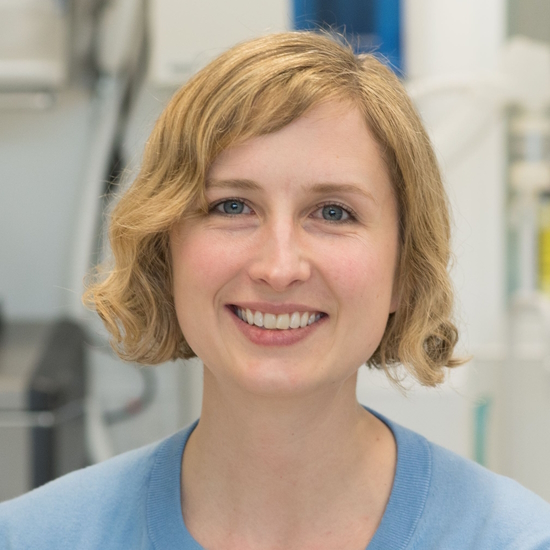
Dr Rebecca Taylor, University of East Anglia, UK

Dr Rebecca Taylor, University of East Anglia, UKRebecca’s research focuses on the neuronal regulation of ageing and stress response activation, using Caenorhabditis elegans as a model organism. With a particular focus on the endoplasmic reticulum unfolded protein response (UPRER), her group is interested in why the activation of stress responses declines with age, how this leads to neurodegenerative disease, and how the loss of stress responses can be remedied to improve health. In addition, an accumulating body of recent work suggests that stress responses can be initiated by inter-tissue communication that allows protective responses to spread from neuronal cells to other tissues throughout an organism, linking the detection of stressful environments with integrated, whole-organism defensive responses. The Taylor group is investigating the ways in which neurons detect stress, the means by which stress responses are communicated between cells, and how interventions in this process might be utilized to treat disease. Rebecca studied Natural Sciences at the University of Cambridge, before undertaking a PhD in Genetics at Trinity College, Dublin. She then joined Professor Andy Dillin’s lab at the Salk Institute, La Jolla, USA, as a postdoctoral researcher, moving to the University of California, Berkeley, before joining the Medical Research Council Laboratory of Molecular Biology (LMB) in 2014 as a Group Leader. In 2023 she moved her group to the University of East Anglia School of Biological Sciences. |
| 16:50-17:00 |
Discussion
|
| 17:00-18:15 |
Poster session / flash talks
|
| 09:00-09:30 |
Ischemic ‘conditioning’ as a therapeutic tool to increase tissue resilience: trials, tribulations and clinical translation
Overwhelming preclinical evidence has revealed that brief and transient episodes of non-lethal ischemia paradoxically render tissues resistant to a subsequent, more sustained ischemic insult. This phenomenon, termed ‘ischemic conditioning’, was first described in the heart and has subsequently been reported in other organs susceptible to ischemia- and ischemia-reperfusion injury, including (but not limited to) the brain, liver and kidney. Progress has been made in elucidating the molecular mechanisms that contribute to conditioning-induced tissue protection in cardiac models. In addition, results from initial Phase II clinical trials suggested that ischemic conditioning may improve outcomes following both planned and unplanned ischemic event (ie, cardiac surgery and ST segment elevation acute myocardial infarction, respectively). In contrast, subsequent large Phase III trials have failed to confirm significant clinical benefit. Future successful clinical translation of ischemic conditioning will require a re-evaluation of the relevance and rigor of the preclinical models that have been used, together with an enhanced understanding of the factor(s) that favour versus preclude the development of a ‘conditioned’ phenotype. 
Professor Karin Przyklenk, Children's Hospital of Michigan/Central Michigan University, USA

Professor Karin Przyklenk, Children's Hospital of Michigan/Central Michigan University, USAKarin Przyklenk, PhD, serves as Scientific Director of the Clinical Research Institute at the Children’s Hospital of Michigan, is the Carman and Ann Adams Endowed Chair in Paediatric Research, and is Professor of Paediatric Science at the College of Medicine, Central Michigan University. Dr Przyklenk is an established cardiovascular scientist with >30 years of experience investigating the pathophysiology and cellular/molecular mechanisms of ischemia-reperfusion injury in the heart. She has received recognition for her contributions to the identification of cellular mechanisms and signaling pathways that increase the tolerance of the myocardium to ischemia-reperfusion, the development of novel strategies to limit damage caused to the heart by ischemia-reperfusion, the effect of clinically relevant comorbidities on ischemia-reperfusion injury and cardioprotection, and efforts to translate these concepts to the clinical setting. Her work has resulted in >200 peer-reviewed publications and invited reviews. In addition, Dr Przyklenk participates on international grant review panels and is Editor-in-Chief of the Journal of Cardiovascular Pharmacology and Therapeutics. |
|---|---|
| 09:30-09:40 |
Discussion
|
| 09:40-10:10 |
Cardio-resilience due to chronic or brief stresses: pathology vs conditioning
The response of the adult human myocardium to a relatively long sustained injurious insult (eg, during cardiac surgery) can be altered by pathology. The progression of different cardiac diseases triggers different remodelling (metabolic, molecular, structural etc) that determine how the heart responds to the insult and the extent of injury. Additionally, brief non-injurious stresses applied directly to the heart (conditioning) are known to protect the myocardium against a long sustained injurious insult. The conditioning can also be a remote one (Remote Ischaemic Preconditioning, RIPC) where a brief stress applied to a distant organ is cardioprotective. RIPC has advantages but its clinical translation in disease setting has been controversial. Understanding of disease-induced cardiac remodelling and mechanisms underlying conditioning is important for mobilising cardiac intrinsic protective pathways. 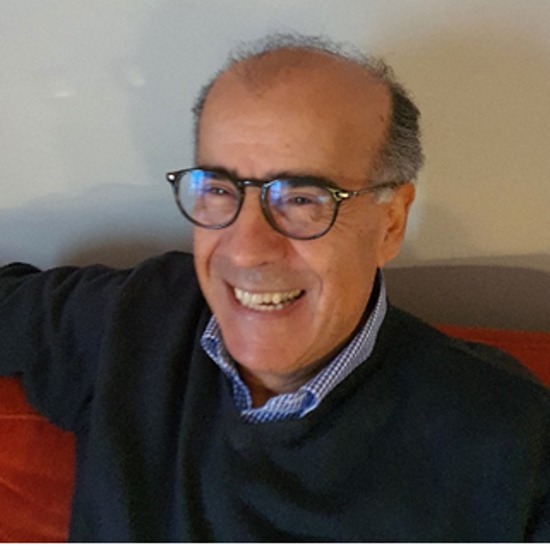
Professor M.-Saadeh Suleiman, Bristol Medical School, Bristol University, UK

Professor M.-Saadeh Suleiman, Bristol Medical School, Bristol University, UKM.-Saadeh Suleiman (PhD, DSc) is a Professor of Cardiac Physiology at the Bristol Medical School, Bristol University. Academic activities include teaching undergraduate and postgraduate students in both the Medical & Biomedical Schools. Research interests are focused on investigating vulnerability to the damaging effects of cardiac insults and identify/design novel cardio-protective interventions. His work at Bristol resulted in key findings that influenced clinical practice in both adult and paediatric open-heart surgery. He is an elected Fellow of the following institutions: the European Society of Cardiology, the International Academy of Cardiovascular Sciences, the Society of Biology & The Physiological Society. Other distinctions include being a member of the team that was awarded the UK Hospital Doctor Award for Team of the Year in Surgery and runners up for Cardiovascular Medicine, member of the executive committee of the British Society for Cardiovascular Research and a founding member of the Bristol Heart Institute. |
| 10:10-10:20 |
Discussion
|
| 10:20-11:00 |
Break
|
| 11:00-11:30 |
Cardioprotection by remote ischemic conditioning (RIC) and its translation
There is still a medical need for cardioprotection beyond that by rapid coronary reperfusion, since mortality and morbidity, notably from heart failure, in patients with acute myocardial infarction remain high. Brief cycles of ischemia/reperfusion in a tissue or organ remote from the heart (RIC) reduce infarct size from sustained myocardial ischemia/reperfusion in all species tested so far, including humans. In the researchers' pig model of reperfused acute myocardial infarction, RIC before (preconditioning) or during (perconditioning) coronary occlusion reduces infarct size. The signal transfer of RIC from the periphery to the heart involves humoral and neuronal factors. Humoral factors of RIC can be transferred with plasma preparations from one individual to another, even across species. The neuronal signal transfer involves peripheral sensory afferents, the central nervous system and vagal efferents. The spleen serves as a decisive relay organ of RIC and releases humoral cardioprotective factors upon vagal activation. The protective signal transduction in the myocardium involves STAT3 activation and improved mitochondrial function. Repeated blood pressure cuff inflation/deflation on the arm or leg has been demonstrated to reduced infarct size and improve clinical outcome in patients undergoing coronary bypass surgery when this RIC was used in a preconditioning mode and in patients with reperfused acute myocardial infarction when RIC was used in a perconditioning mode. However, larger clinical trials with neutral results on RIC also exist and have raised disappointment on its translation. Co-morbidities, co-medications but also a primordial myocardial non-responsiveness may interfere with cardioprotection by RIC. It appears important to focus on RIC in patients who really need adjunct cardioprotection because they are at high risk and/or have suboptimal therapeutic reperfusion, and respective trials are underway. Humoral factors of RIC in humans can also be transferred to bioassay recipient hearts. In cardiosurgical patients, the myocardial signal tranduction of RIC also involves STAT activation and improved mitochondrial function. Nat Rev Cardiol 12,2020,773-89; Basic Res Cardiol 117,2022,39 and 58; AJP 323,2022,H 1365-75 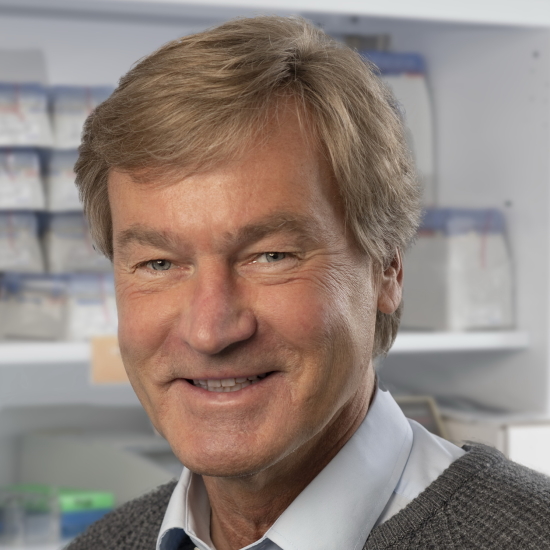
Professor Gerd Heusch, Institute for Pathophysiology, West German Heart and Vascular Centre, University Duisburg-Essen/Germany

Professor Gerd Heusch, Institute for Pathophysiology, West German Heart and Vascular Centre, University Duisburg-Essen/GermanyGerd Heusch studied medicine in Düsseldorf and Bonn, where he graduated as MD in 1980. He then was postdoctoral fellow in the Department of Physiology in Düsseldorf. In 1985/1986 he was research cardiologist at the University of California, San Diego under supervision by Dr John Ross Jr. In 1989 he was appointed professor and chair of the Institute for Pathophysiology at the University of Essen, a position which he holds up to now. His major research interests are the control of coronary blood flow, myocardial ischemia/reperfusion and cardioprotection. He has been a president of the German Cardiac Society and of the International Society for Heart Research/European Section. In 2012 he was awarded the William Harvey Lecture and Silver Medal of ESC, in 2017 the Carl Ludwig award of the German Cardiac Society and the Carl Wiggers award of the American Physiological Society. He is editor of Basic Research in Cardiology and editorial board member of a number of other prestigious journals. |
| 11:30-11:40 |
Discussion
|
| 11:40-12:10 |
SUMO Cell Atlas
Post-translational modification (PTM) events generate proteoforms that orchestrate cell signalling in almost every biological process. The SUMOcode project aims to understand a critically important but understudied PTM in plants, SUMO (Small Ubiquitin-like Modifier). The rules governing specificity and function remain rudimentary for most PTMs, but the plant SUMO system provides a unique possibility to unravel the rules governing SUMOylation, as its core machinery comprises only 33 genes in Arabidopsis, compared with many hundreds for other PTMs. Professor Sadanandom's central hypothesis is that SUMO specificity is conferred through how cells are primed to respond to different stress signals, the tissue and cellular spatial distribution of SUMO machinery and substrates and control of SUMOylation modification via activation, repression and competition for PTM sites. Professor Sadanandom with a group of researchers have developed a SUMO system cell atlas (a resource that will characterize each part of the machinery), how and in which cells and when it works, so that a map of the key events that trigger a SUMOylation response to environmental cues can be revealed. They will use the model plant, Arabidopsis, arguably the best non-human, multicellular organism for this scale of interrogation. It has a plethora of tools and resources that will allow us to dissect the SUMO code in detail and across different cell types, different stages of development and across different response times. This mapping of SUMOylation will reveal the ‘hubs’ that the SUMO machinery targets to cause a cellular response, revealing how the pathway functions and how it can be manipulated to combat environmental challenges or disease. 
Professor Ari Sadanandom, Durham University, UK

Professor Ari Sadanandom, Durham University, UKThe Sadanandom laboratory aims to understand the role of regulatory factors of host Ubiquitin Proteasome system that could act as targets for defence suppression by plant pathogens. Using Arabidopsis, tobacco, rice and wheat as hosts plants Professor Sadanandom's laboratory employs a cross disciplinary approach including genetic, molecular and biochemical techniques to characterise components that are specifically Ubiquitinated upon bacterial and fungal pathogen infection to undermine plant immunity. In recent years another class of ubiquitin-related polypeptide tags called small ubiquitin-like modifiers (SUMO) has emerged as a very influential regulator of stress signalling in plants and animals. Nearly all crops are highly susceptible to drought, heat stress and salinity. The work of Professor Sadanandom's laboratory on post-translational modification of proteins has shown that specific signalling proteins are SUMOylated as part of plant survival strategy during drought, heat and high salinity. |
| 12:10-12:20 |
Discussion
|
| 12:30-13:30 |
Lunch
|
| 13:30-14:00 |
Resilience, healthy ageing and longevity: a biological perspective
More than 60 years of biogerontological research has led to the understanding that ageing is not a disease, and there are no ageing-causing gerontogenes. Genes determine our ability to survive and maintain health for a limited period, known as the essential lifespan of the species. These longevity-assurance genes or vitagenes create a homeodynamic space, characterised by stress response, damage control and constant remodelling. Resilience, robustness and longevity of an organism are the primary expressions of the homeodynamic space. We are, of course, able to live much longer than our species’ essential lifespan, but our imperfect homeodynamic space progressive shrinks due to the accumulation of molecular damage, and makes us less robust, less resilient and more prone to physical impairment and consequent diseases. Among various interventional approaches being tested and developed, an evidence-based holistic scientific strategy towards healthy ageing is that of mild stress-induced hormesis. Physical, nutritional and mental stress-inducing hormetins lead to the strengthening of the homeodynamics of maintenance and repair systems. Exercise, heat and irradiation are examples of physical hormetins, which activate various stress responses. Several non-nutritional chemical components in the food, such as flavonoids and polyphenols present in spices, herbs and other sources, are examples of nutritional hormetins. Calorie restriction and intermittent fasting are hormetins, which activate the autophagic and sirtuin-mediated stress responses. Intense brain activity and focused attention comprise mental hormetins. A combination of different hormetins offers the possibility of recovering and enhancing body’s resilience and robustness, and help achieving healthy ageing and longer lifespans. 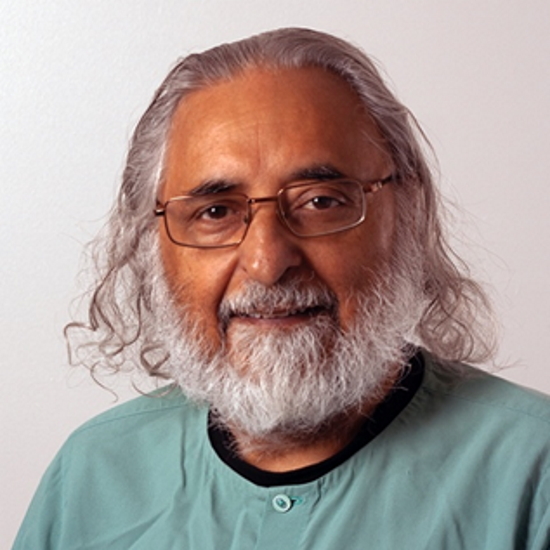
Professor Suresh Rattan, Aarhus University, Denmark

Professor Suresh Rattan, Aarhus University, DenmarkSuresh Rattan, PhD, DSc, Professor Emeritus of Biogerontology at the Department of Molecular Biology and Genetics, Aarhus University, Denmark. Research areas and expertise include ageing of human cells and application of the concept of mild stress-induced hormesis as a modulator of ageing. Recipient of the Lord Cohen Medal in Gerontology from the British Society for Research on Ageing (BSRA), and an Honorary Doctorate from the Russian Academy of Medical Sciences (St. Petersburg branch). Discoverer of the healthy-ageing effects of kinetin and zeatin, forming the basis of some cosmeceuticals. Published more than 300 scientific articles, and has authored/edited/co-edited 20 books, including books for children, general public and research scientists. Founding Editor-in-Chief of BIOGERONTOLOGY (since 2000) – an international peer reviewed journal published by Springer-Nature. Present Chairman of the Biological Section of the European Region of the International Association of Gerontology and Geriatrics (IAGG-ER). |
|---|---|
| 14:00-14:15 |
Discussion
|
| 14:15-14:45 |
The role of metabolic resilience in healthy ageing
Energy metabolism provides fuel for basic and adaptive activities of the cell including quality control and repair processes. Moreover, metabolic plasticity is directly required for the successful adaptation of the cells to extrinsic and intrinsic stressors, and it supports the healthy longevity at the organismal level. In previous work, the authors of this study found that the adaptive capacities of mitochondria, lipid metabolism and glycolysis fail with age in an interconnected fashion. This failure has an impact not only on the general well-being of the organism but also on the positive effects of the resilience-promoting treatments such as dietary restriction (DR) and DR-mimetic compounds like metformin. Particularly, the scientists found that resilience benefits of metformin in non-diabetic C. elegans are abrogated and even reversed following late-life onset intervention, with life extension of metformin-exposed young nematodes mirrored by toxicity of this drug in old animals and cells. In this talk Dr Maria Ermolaeva will discuss molecular mechanisms that underlay late life failures of the conventional metabolic resilience treatments, and will speak about new intervention paradigms discovered by her group, which facilitate metabolic plasticity independently of age. 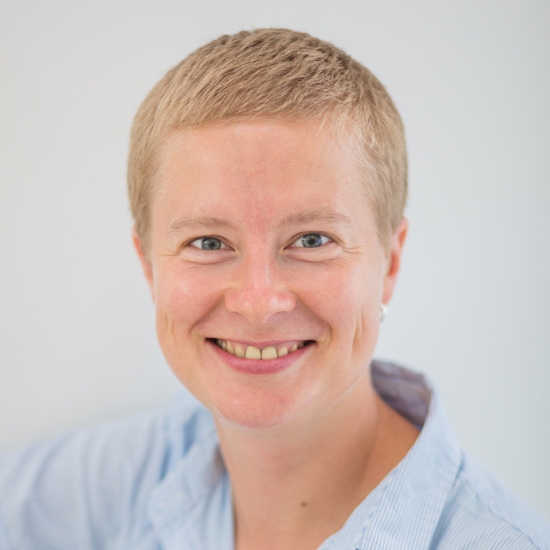
Dr Maria Ermolaeva, Leibniz Institute on Aging – Fritz Lipmann Institute (FLI), Germany

Dr Maria Ermolaeva, Leibniz Institute on Aging – Fritz Lipmann Institute (FLI), GermanyDr Maria Ermolaeva studied Biochemistry at the Lomonosov Moscow State University in Moscow, Russia, and after graduation in 2002, moved to EMBL Rome to perform her doctoral studies in the field of mouse immunology (Manolis Pasparakis group). In 2006, she transitioned to Cologne, Germany, together with the Pasparakis lab and in 2008, initiated her post-doctoral studies in the newly established CECAD Excellence Cluster on aging of the Cologne University. During her time at CECAD, Dr Ermolaeva worked on systemic DNA damage responses in the group of Bjoern Schumacher, using C. elegans as a model organism. She found that DNA damage in proliferating cells enhances systemic stress resilience by activating innate immune response and the ubiquitin proteasome system. In 2014, Dr Ermolaeva received an offer from the Leibniz Institute on Aging in Jena, Germany, to start her own group at this institute, and in April 2015 the group was established focusing on stress tolerance, tissue resilience and metabolic plasticity. The group's key interest is in preventing metabolic failure with age and in enhancing the resilience of old organisms to environmental challenges such as temperature, diet, light and deterioration of the commensal microbiome. The key model systems we use are C. elegans, short-lived killifish, mice and human primary cells. |
| 14:45-15:00 |
Discussion
|
| 15:00-15:30 |
Break
|
| 15:30-16:00 |
Hidden costs of dietary restriction in the fly
Dietary restriction (DR) extends lifespan and healthspan reliably and strongly across model organisms. Potential costs of DR have been proposed however. Dr Simons together with a group of scientists showed recently using meta-analysis in mice that costs of DR on immunity are probable, and they recently confirmed this experimentally in the fly. They further showed that DR makes flies vulnerable to refeeding syndrome, contrary to current predictions from evolutionary theory. Dr Simons will interpret these results using recent theoretical process they have made in understanding DR on the theoretical level using a reaction norm framework and reliability theory of ageing. 
Dr Mirre Simons, University of Sheffield, UK

Dr Mirre Simons, University of Sheffield, UKMirre Simons (Sir Henry Dale Fellow, University of Sheffield) studies the biology of ageing from an evolutionary and biomedical perspective. Despite ageing being central and universal to all life, our understanding of why and how we and other organisms age is limited. One treatment that increased health and extends lifespan across organisms is dietary restriction. Currently, his lab uses a combination of genetic and diet experiments in the fruit fly to ultimately understand and treat ageing. |
| 16:00-16:15 |
Discussion
|
| 16:15-17:00 |
Panel discussion/overview
Short talks at the start of the section: Professor Anna Jazwinska - Cardiac preconditioning in zebrafish Dr Helen Weavers - Tissue resilience takes flight 
Professor Anna Jazwinska, the University of Fribourg, Switzerland

Professor Anna Jazwinska, the University of Fribourg, SwitzerlandAnna Jazwinska is full professor at the University of Fribourg in Switzerland. She obtained her PhD from the University of Cologne in Germany in 2000. She held a post-doctoral position at the Biozentrum in Basel in Switzerland (2000-2004). Then, she was an instructor and associate researcher at the Harvard Medical School and Children’s Hospital Boston, USA. She started her own lab at the University of Fribourg in 2007. Her current research focuses on organ regeneration and cardiac preconditioning in zebrafish. 
Dr Helen Weavers, Biomedical Sciences, Bristol, UK

Dr Helen Weavers, Biomedical Sciences, Bristol, UKHelen Weavers is a Wellcome Trust and Royal Society Sir Henry Dale Fellow at the University of Bristol. She obtained her PhD from the University of Cambridge in 2012 and held a short post-doctoral position at the University of Bristol (2013-2017) before starting her own lab in 2018. Much of Helen’s research is driven by understanding how body tissues (such as the skin or renal system) resist and recover from insult. In particular, she studies the molecular and cellular mechanisms that make tissues resilient to damage caused by toxic molecules or physical injury. |
